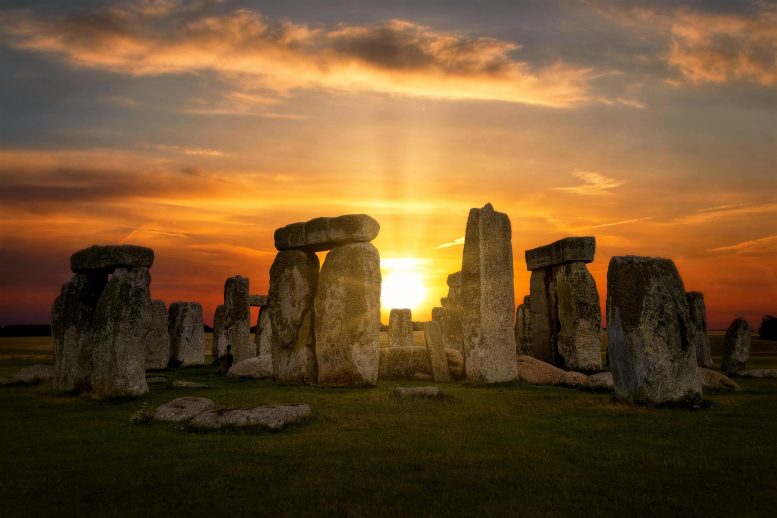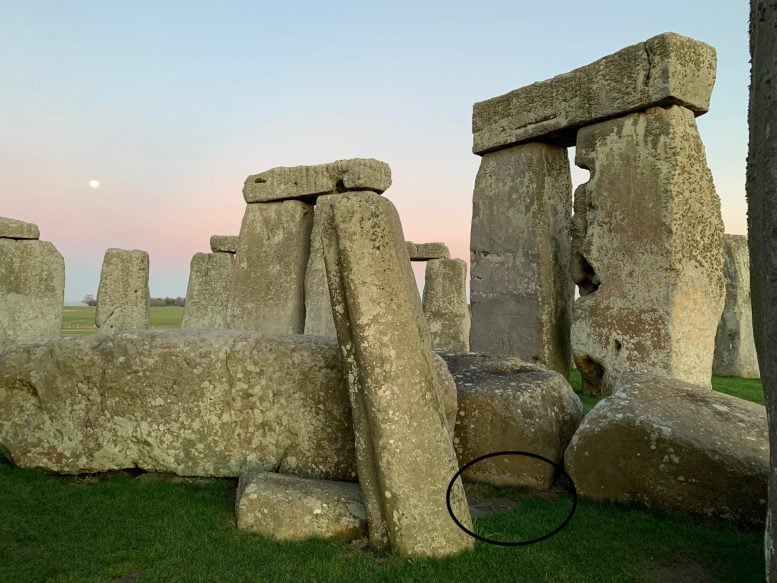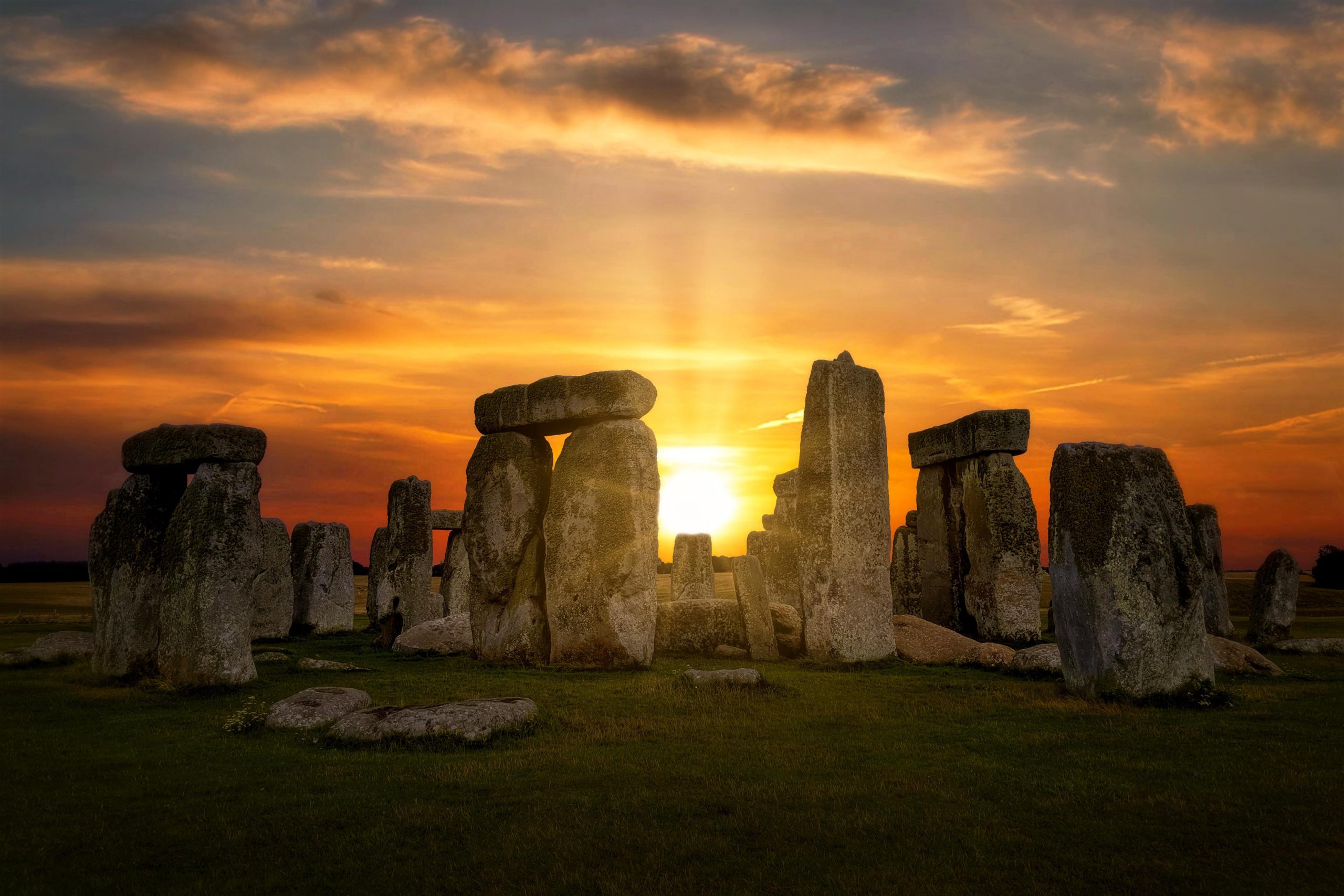
Recent research led by Curtin University has revealed that the famous Stonehenge altar stone, previously thought to have come from Wales, actually came from Scotland. This discovery suggests that by 2600 BC there were advanced transportation methods and social organizations in place to transport such a massive stone over 700 kilometers.
New research led by Curtin University has revealed that the monumental six-tonne altar stone at Stonehenge, previously thought to have come from Wales, actually came from Scotland.
Furthermore, the finds suggest that unexpectedly advanced transport methods and good social organisation existed at the time the stone arrived at its current location in southern England around 5,000 years ago.
Curtin researchers studied the age and chemistry of mineral grains in fragments of the Altar Stone, a 50-centimeter-thick, 5-by-1-meter sandstone block located at the center of the famous Stonehenge stone circle in Wiltshire.
Lead author and PhD student Anthony Clarke, from the Timescales of Mineral Systems Group in the School of Earth and Planetary Sciences at Curtin University, said analysis of the age and chemical composition of the minerals in the Altar Stone fragments aligned them with rocks from northeast Scotland, while clearly distinguishing them from Welsh bedrock.

“Our analysis found that certain mineral grains in the altar stone are mostly between 1,000 and 2,000 million years old, while other minerals are about 450 million years old,” Clarke said.
“This provides a unique chemical fingerprint suggesting that the stone came from rocks in the Orkney Basin in Scotland, at least 750 kilometers from Stonehenge.
“Given its Scottish origin, the finds raise fascinating questions about how such a massive stone could have been transported over long distances around 2600 BC, given the technological limitations of the Neolithic period.
Impact of Scottish origins
“This discovery has personal significance for me too. I grew up in Mynydd Preseli in Wales, where some of the stones of Stonehenge come from. I first visited Stonehenge when I was one year old and now, at 25, I have returned from Australia to help with this scientific discovery – you could say I have come full circle with the stone circle.”
Study co-author Professor Chris Kirkland, also from the Timescales of Mineral Systems Group at Curtin, said the findings had significant implications for understanding early communities, their connections and their transport methods.
“Our discovery of the origins of the Altar Stone highlights a significant level of social coordination during the Neolithic period and helps to paint a fascinating picture of prehistoric Britain,” said Professor Kirkland.
“Transporting such a massive cargo overland from Scotland to southern England would have been extremely challenging, suggesting a likely shipping route along the British coast.
“This implies long-distance trade networks and a higher level of social organisation than is generally thought to have existed in Neolithic Britain.”
The research was funded by an Australian Research Council Discovery Project and carried out in collaboration with Aberystwyth University, the University of Adelaide and University College London.
Refuting centuries-old assumptions
Co-author Professor Richard Bevins of the University of Aberystwyth said the findings had overturned all prevailing views of the last century.
“We have succeeded in determining the age and chemical fingerprints, so to speak, of perhaps the most famous stones of this world-famous ancient monument,” said Professor Bevins.
“Although we can now say that this iconic stone comes from Scotland and not Wales, the search for exactly which region of north-east Scotland the altar stone came from will still continue.”
Co-author Dr Robert Ixer of the UCL Institute of Archaeology said the finds were truly shocking, but if plate tectonics and atomic physics are correct, then the altar stone came from Scotland.
“The work raises two important questions: Why and how exactly was the altar stone transported from the far north of Scotland, a distance of more than 700 kilometers, to Stonehenge?”
Curtin Vice-Chancellor Professor Harlene Hayne said much of the research and analysis carried out by Mr Clarke and Professor Kirkland was done at the university’s prestigious John de Laeter Centre.
“This fascinating study is another example of the outstanding work being done by the Timescales of Mineral Systems Group at Curtin University, in collaboration with the John de Laeter Centre, using state-of-the-art equipment at our GeoHistory facility to support important mineral research,” Professor Hayne said.
“It offers special mass spectrometers that can be used to study the composition of materials such as rock-forming minerals, archaeological artifacts, meteorites, ceramics and even biological substances such as teeth, bones and shells.
“Sustaining state-of-the-art facilities such as these require continued investment, which is critical to attracting the world’s best minds. In this case, we are delighted that our outstanding research reputation and facilities have attracted PhD student Anthony Clarke to travel 15,000 kilometres from his home in Wales to study at Curtin and make this significant discovery.”
Mr Clarke said he chose Curtin for his PhD because it also offered him the opportunity to work with renowned researchers such as Professor Kirkland.
“Curtin has given us the freedom and independence to explore fascinating sites like Stonehenge. With access to the most advanced equipment and expert staff in the world, I can do all my work there,” said Mr Clarke.
“Western Australia itself is an excellent natural laboratory, as it is home to the oldest minerals on Earth, so I am very grateful to have had the opportunity to conduct this research in this extraordinary place.”
Reference: “A Scottish Provenance for the Stonehenge Altar Stone” by Anthony JI Clarke, Christopher L. Kirkland, Richard E. Bevins, Nick JG Pearce, Stijn Glorie and Rob A. Ixer, August 14, 2024, Nature.
DOI: 10.1038/s41586-024-07652-1

